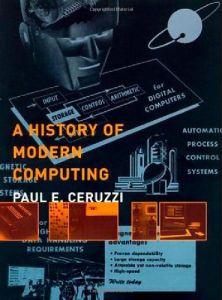Join getAbstract to access the summary!

Join getAbstract to access the summary!
Paul E. Ceruzzi
A History of Modern Computing
MIT Press, 2000
What's inside?
That shiny computer on your desk is the newest child in a family lineage of computing machines going back to 1945. Plunge into this history to meet its grandpa (the UNIVAC) and grandma (the 1975, $400 Altair Personal Computer kit).
Recommendation
Paul E. Ceruzzi, curator of the National Air and Space Museum, describes the development of computing, starting with its earliest history. He examines the beginnings of commercial computing from 1945 to 1956 and traces the history of computer hardware and software, dividing these developments into five- to 10-year time periods. His book emphasizes technical development, rather than personalities or business dynamics, a focus that contributes to its fairly dry, academic style. With this caveat, getAbstract recommends the book primarily to those with a technological bent, such as professionals in operations and computer sciences, and academics in the field. However, if you are interested in the subject, you’ll love this. Ceruzzi provides an informative and comprehensive saga including extensive footnotes and a bibliography that runs about 80 pages.
Summary
About the Author
Paul E. Ceruzzi is curator at the National Air and Space Museum and the Department of Space History. He is the author of Beyond the Limits: Flight Enters the Computer Age.


















Comment on this summary